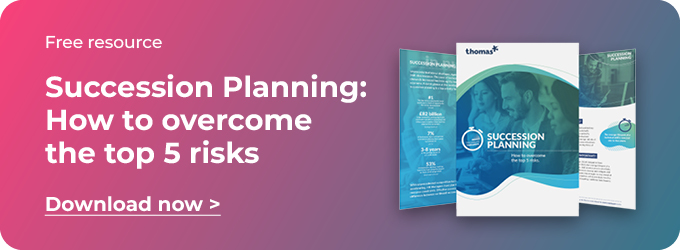Have you ever wondered how some businesses manage to cope with extra-demand so quickly? Or how when it comes to project completions, some fail to hit the mark altogether? Workforce planning is one of the biggest drivers of business success and understanding your recruitment needs.
From line managers to HR leaders, workforce planning is a critical component of any business, it dictates the present and the future of the business in achieving all the goals and aligning day-to-day strategy with the requirements of a changing organisation.
It’s importance lies in how it can provide market and industry intelligence to help organisations focus on a range of challenges and issues - and then prepare for the initiative to help support longer term business goals.
In this guide, you will get to understand what workforce planning is, why it is important, the stages associated with it and finally the strategic success of workforce planning.
What is workforce planning?
Workforce planning is the analysing and planning for the future of your workforce - aligning the changing organisational needs with a people strategy. The calculation is created by looking at the current supply of human capital whilst assessing any potential gaps in your workforce. By having the proper talent management in place, you can discover if you have the right people in the right roles - and if they can fulfil the work required.
Having people with the right skills is essential, especially to help them succeed in their roles and that of the organisation. Workforce planning should be regarded as much about employing and deploying the right talent to keep things running smoothly.
More specifically, though, workforce planning is about bringing together many different variables, such as:
- Analysis of existing workforce
Do you have enough people/talent to cover your existing workloads?
- Determining future workforce needs
Are you going to require more or less talent/people in the future.
- Identifying gaps that will need to be filled
What areas need the most amount of requirement in order to fulfill the strategic needs of the business moving forwards.
- Coming up with solutions
Identifying short and long term solutions to your workforce needs.
- Implementing and assessing these
Hiring the right people for the right requirements.
Why is workforce planning important
We live in a talent based economy where the most important asset is people. Having the right people with the right skills and attitudes means that we can develop our organisations to align with a long term strategic vision. When those strategies change due to external and internal forces, people remain at the heart of the success of the organisation, that’s why it's important to develop proper workforce planning in order to meet those challenges.
However, lack of planning and lack of talent recruitment are possibly some of the worst things that can happen to a business when it is trying to align with the goals it has set itself in order to survive or grow.
Lack of talent can lead to both a skills shortage and ability to get the job done. For example, if you were an aviation firm pioneering new technology, you couldn’t do it without highly skilled members of the team. You also couldn’t manage new projects or develop a new product without having enough members of the team to do so.

Should your objectives change as a result of external factors, e.g. economic downturn, workforce planning can give you a clear understanding of what skills are required to maximise your current opportunities and workloads. It may even help you with driving change if you need to make redundancies as there is no longer a demand. Failure to make any changes can lead to higher costs and even threaten business survival.
Anyone who has ever worked in a business will know, not having the right talent in the right place can weaken a business achieving its objectives before realising the damage has already been done. But, with the right forecasting of workforce requirements, businesses have the opportunity to understand where they need to bolster their strengths and fill in any weaknesses - or potential ones in order to avoid such issues.
Strategic workforce planning is beneficial because:
Anticipate needs
For example, you could be getting involved in a large scale project that requires more people in order to complete. This could be a skills requirement or a labour issue. Another factor to consider is if someone is leaving the business or is retiring. You need to be able to plug that skills gap.
Make the most of existing talent
You want to be able to understand who in your team deserves more recognition and in turn, responsibilities that can help manage workloads and people. You are rewarding people and their skill sets in this scenario which is creating a better feedback system for continuous improvement and success.
Improve recruitment processes
Who you hire is more important than the number of people you hire. Someone who is capable of doing the job from the moment they walk into the role is a better scenario than someone who can’t - and takes a long time to develop knowledge and skills. But hiring people with the right aptitude is equally important - their behaviour can make a difference in the long term.
Align business objectives with human resourcing
If your objective is to grow your business, you need the right people to do that. Human resources are tasked with finding the right people. If your objective is to balance the books, human resources can find ways to manage redundancies.
Determine where investment is beneficial
Continuous training and development is essential for both the employee and the business to continue driving success. Workforce development can understand where the money is best spent and invest funds into areas that need it most.
Identify gaps and skills shortfalls
What areas of the workforce need skills development? What areas are lacking the most in terms of resources? All of this has an impact on the business, workforce planning can overcome these questions.
Derive and implement appropriate retention strategies
Whether it is implementing rewards schemes or simply acknowledging the work that is being done, there are many different tactics that can be used in order to keep the best, most talented employees.
Stages of workforce planning
Luckily, the idea of workforce planning has been developed over many years as such, it is possible to use a standard model to help define the workforce planning process.
It should remain relatively basic in its execution avoiding too many complex stages, instead, it should involve simple and easy to implement principles. The typical six stages include:
1. Define the overall plan
This is the vision you see for the business, defined under the realm of strategy, you want to clearly think about the business you are creating. To do so, think about a series of questions such as:
- What is the overall business strategy?
- Where is the organisation going?
- What changes do you expect to take place in the next 1-3 years and what will drive them?
- What challenges exist in the market? e.g. PEST analysis
- How constant do you expect funding to be? Remain the same or grow over that period of time?
2. Identify existing workforce
Otherwise identified as a supply analysis, in identifying your existing workforce you spend the time looking at what may change and what skills may need to be filled in order to achieve your strategic goals.
- Who are the existing staff and what skills do they have?
- What is the current turnover rate? What is the turnover rate for the industry?
- If we lack staff, can we recruit locally and fast?
- Can the workload be changed to meet the skill sets of the current staff?

3. What’s needed
Also viewed as a demand analysis, in identifying your current workforce through skills and numbers, you can start to see what is required today and in the future.
- What skills are needed to meet the requirements of the plan?
- How soon are they needed? Over what timescale must they be in place?
- Are there any anticipated changes in technology/laws/regulations or customer base that mean we need to recruit because of affected workload demands?
- What opportunities do we have to leverage resources from other departments in case we need to?
4. What gaps exist
Gap analysis is about understanding the gaps between workforce demand and supply and to understand the top priority gaps that will have the greatest impact on the business.
- Can the current workforce fulfill ‘what’s needed?’
- What are the gaps between what’s currently in place and what is required.
- Do we have a skill base that is highly talented which makes finding new talent very hard?
- What diversity gaps exist in the workforce?
- How can we improve the diversity gap in the workforce through workforce planning?
- How will retirement affect the spread of employees around the business?
5. How will requirements be met?
This is about tying together the elements of your workforce interventions and how your organisation is going to meet its strategic goals.
- Describe options that might be considered to meet identified needs.
- What workforce plans is my business ready to implement?
- What short term and long term plans are going to be best introduced?
- How do I get buy-in for proactive workforce planning and how do I show that it is essential?
6. Results assessment
You should regularly monitor the performance of your workforce planning and understand your gap analysis as well as strategic objectives to see where there can be improvements.
- How will my organisation define what success looks like? What metrics are going to be used?
- How will I know if I have achieved what was set out? Was the action plan completed on time?
- What kinds of refinements can I add to the analysis made? What other things will make us more successful?
Strategic workforce planning success
When spending the time creating the necessary plans in strategic workforce planning, you want to be able to understand what success will look like. This will vary depending on the marketplace and the niche your business is operating in. However, there are some generic benefits that you can experience.
Cost optimisation
One of the big advantages that comes from workforce planning is cost optimisation. It helps with planning recruitment efforts, managing employee turnover (e.g. retirement) and helping to increase productivity.
Oxford Economics states that 34% “of companies have made good or significant progress toward goals of building a workforce to meet future business objectives.”
Dealing with demographic workforce changes
You can start to deal with demographic workforce changes better when you plan for them. For example, an older workforce will see more retirements coming in waves rather than a bit at a time. Filling the talent gaps that are left behind is going to be a bigger issue without workforce planning.
Check out our guide about succession planning for more details.
You can even start to think about diversity in these groupings and understand where there are diversity gaps in the workforce and begin addressing them.
Having a long term recruitment strategy
One of the biggest benefits of workforce planning is that you can create a long term recruitment strategy. By creating and focusing on a strategy that foresees a backup in terms of skills for as many positions in the organisation as possible, you achieve long term support. Whenever someone leaves, there is at least one other person in the company with the skills to fill the gap (until a more sustainable solution is found, of course).
This also means having internal recruitment options which is sustainable if you know of your workers skill sets or even aptitudes to help plug gaps and create new opportunities.
Companies like Cisco for example have used workforce planning to better understand the skills and talent within their organisation, giving them more oversight in how to develop their employees and in return see the business grow.
By developing their teams, one of the key takeaways was that they could streamline their talent selection process - by spreading out the skills developed across the organisation they could find people to step in wherever there was a shortfall.
One other noted improvement was they could recruit internally at a greater speed because they not only had staff who were better equipped to but they also had a system to look up who would be suitable for the role.
How Thomas can help you with workforce planning
We live in a talent based economy where the most important asset is people. However, lack of planning and lack of talent recruitment are possibly some of the worst things that can happen to a business when it is trying to align with the goals it has set itself in order to survive or grow.
That’s why workforce planning is so important. Anyone who has ever worked in a business will know, not having the right talent in the right place can weaken the possibility of a business achieving its objectives before realising the damage has already been done.
At Thomas, we have a suite of psychometric assessments which can help employers and line managers find the candidates who respond to certain types of training and motivation as well as identify candidates who can learn and develop their skill sets to match what is required for the organisation.
To see how we can help you identify people with the right skills and attitudes to develop your organisation to align with your long term strategic vision, get in touch with one of our experts.





